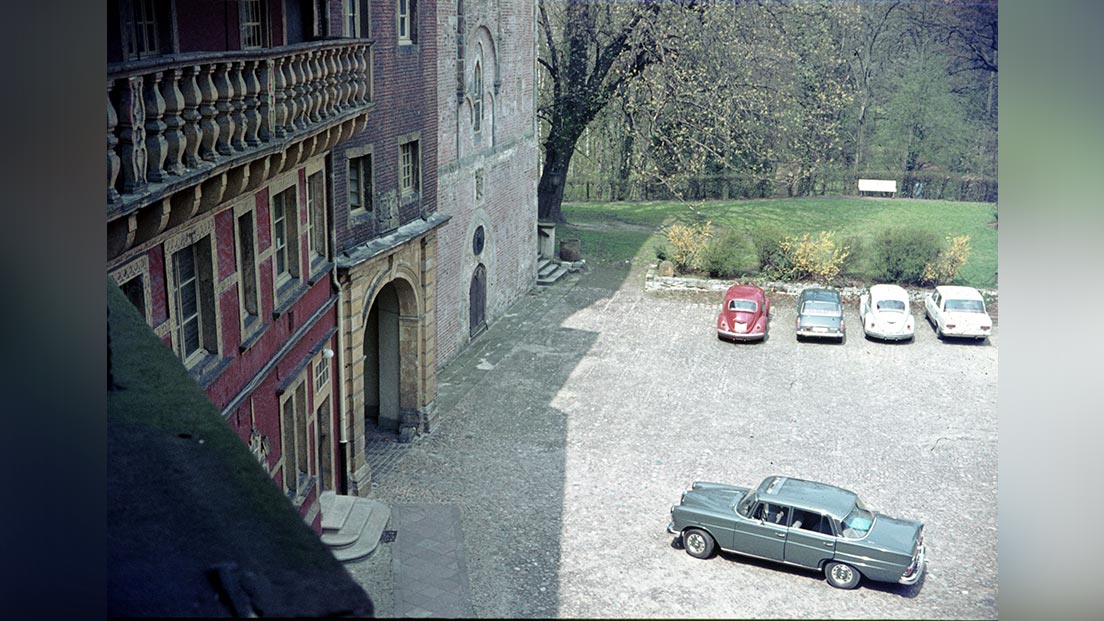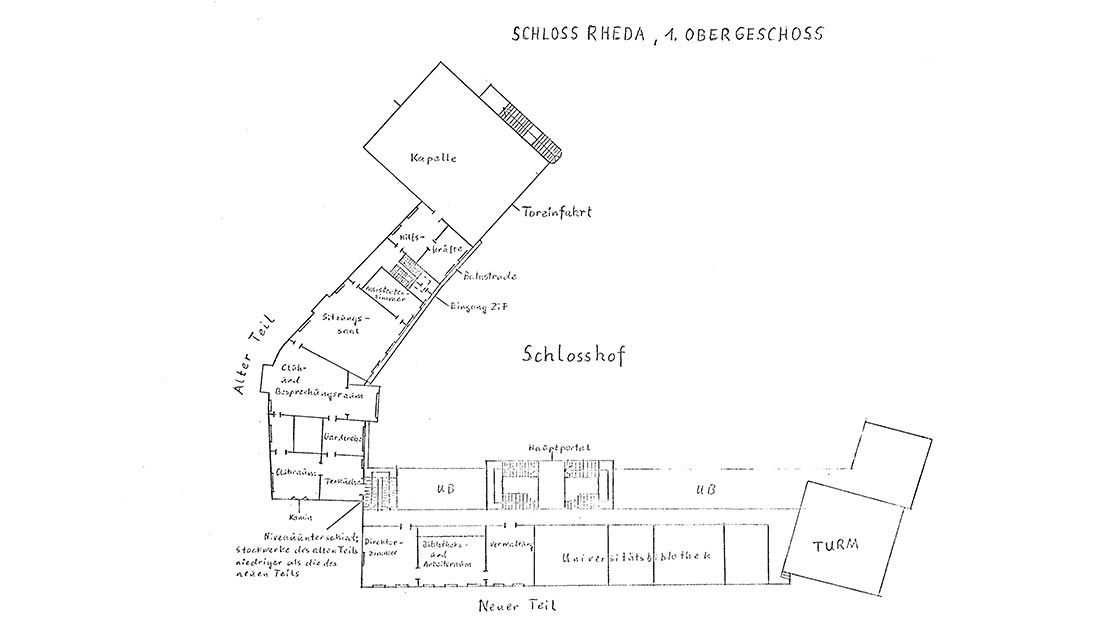–
Source: WDR und cinetv (Universitätsarchiv Bielefeld, FS 31)
The ZiF was founded as a unique university institution in Germany and purposely started its work before the University began its teaching activities. Its establishment was the vision of Helmut Schelsky, who also became its first director. The first German Institute for Advanced Study was designed on the model of the American institutes in Princeton and Stanford.
–
Source: Universitätsarchiv Bielefeld, FS 234
A bumpy start becomes a virtue
Schelsky saw the ZiF’s task in the “reunification of the sciences” as a counter-movement to the ever-increasing specialisation. He had already been thinking about an Institute for Advanced Study for interdisciplinary cooperation in Germany at the beginning of the 1960s. In the conceptual publications that preceded its foundation, the ZiF was referred to as the “Centre of the University”, which underlines the strong interdisciplinary orientation of the Bielefeld Reform University. The Center’s statutes particularly emphasised interdisciplinary basic research as an institutional objective.
From 1968 until the completion of the ZiF building at Wellenberg, the Center was housed in Rheda Castle. Dr Gerhard Sprenger, managing director of the ZiF from 1971 to 1998, described the period in the castle as follows: “In addition to several offices, there was a medium-sized conference room and some other small spaces. We lacked everything else: Not all staff positions had been filled, there were not enough apartments for guests and the institute, above all, had to manage without the support of the university, which was still under construction.”
In the early years in Rheda, these structural restrictions brought the working groups and conferences to the fore, which usually only lasted a few days. It was only after the move to the campus that the research profile changed to longer term research groups. This format continues to this day.




